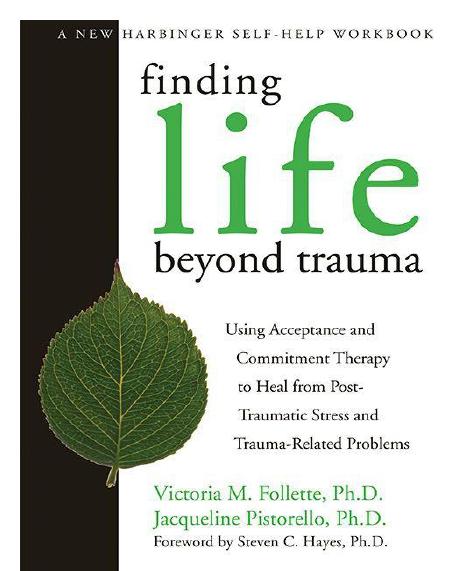Finding Life Beyond Trauma: Using Acceptance and Commitment Therapy to Heal from Post-Traumatic Stress and Trauma-Related Proble by Pistorello Jacqueline

Author:Pistorello, Jacqueline [Pistorello, Jacqueline]
Language: eng
Format: mobi, epub, pdf
ISBN: 9781608823109
Publisher: New Harbinger Publications, Inc.
Published: 2007-06-30T16:00:00+00:00
Say it faster and faster, louder and louder.
Continue for forty-five seconds.
After you stop, notice any reactions to the word that were different from when you were saying it fast and loud. We recommend trying this out whenever you feel hooked by a word.
Description vs. Evaluation
Description and evaluations are two different things, but we often use evaluations as if they are descriptions (Hayes, Strosahl, and Wilson 1999; Hayes and Smith 2005). An example might help clarify this point.
If we tell you, “The Statue of Liberty is in New York,” would you agree? Most folks would know this and would readily agree, right?
If we say, “The Statue of Liberty was given to the Americans by the French,” would you agree? Unless you are a history buff and want to add some caveats, you probably could nod your head yes.
If we say, “The Statue of Liberty is 151 feet from base to torch” and if you go look it up yourself, you’d agree.
Now, if we say, “The Statue of Liberty is a beautiful American landmark,” would everyone reading this agree? The answer is no. Some of you may agree; others may say that it’s interesting but not beautiful, or argue with us about what “beautiful” means.
If we say, “The Statue of Liberty is the best symbol of freedom in the world,” would everyone agree? Probably not, particularly if we were able to question people from a variety of countries.
The last two questions about the Statue of Liberty are evaluations. They move beyond merely describing the Statue of Liberty to judging it in one dimension or another. Evaluations belong to the person thinking or saying them. They are not, in fact, part of the object itself. Being the best at anything is not in the Statue of Liberty; it’s an evaluation of the statue offered by someone.
There are a number of things we can all mostly agree on as descriptions. These are just the facts: the what, where, when, and who. They tend not to be emotion laden or specific to one point of view. Given that the statement is correct, we would all agree. Some examples of descriptions are:
This chair is made of leather and steel.
I work from nine to five, four days a week.
My sister often cries at the movies.
Download
Finding Life Beyond Trauma: Using Acceptance and Commitment Therapy to Heal from Post-Traumatic Stress and Trauma-Related Proble by Pistorello Jacqueline.epub
Finding Life Beyond Trauma: Using Acceptance and Commitment Therapy to Heal from Post-Traumatic Stress and Trauma-Related Proble by Pistorello Jacqueline.pdf
This site does not store any files on its server. We only index and link to content provided by other sites. Please contact the content providers to delete copyright contents if any and email us, we'll remove relevant links or contents immediately.
Unwinding Anxiety by Judson Brewer(72021)
The Art of Coaching by Elena Aguilar(52218)
The Fast Metabolism Diet Cookbook by Haylie Pomroy(20927)
Rewire Your Anxious Brain by Catherine M. Pittman(18331)
Healthy Aging For Dummies by Brent Agin & Sharon Perkins RN(16932)
Talking to Strangers by Malcolm Gladwell(12906)
The Art of Thinking Clearly by Rolf Dobelli(9942)
Crazy Rich Asians by Kevin Kwan(8905)
Mindhunter: Inside the FBI's Elite Serial Crime Unit by John E. Douglas & Mark Olshaker(8727)
The Compound Effect by Darren Hardy(8531)
Periodization Training for Sports by Tudor Bompa(7937)
Becoming Supernatural by Dr. Joe Dispenza(7852)
Tools of Titans by Timothy Ferriss(7833)
Wonder by R. J. Palacio(7750)
Crystal Healing for Women by Mariah K. Lyons(7724)
Bodyweight Strength Training by Jay Cardiello(7683)
Therapeutic Modalities for Musculoskeletal Injuries, 4E by Craig R. Denegar & Ethan Saliba & Susan Saliba(7602)
Should I Stay or Should I Go? by Ramani Durvasula(7437)
Change Your Questions, Change Your Life by Marilee Adams(7394)
